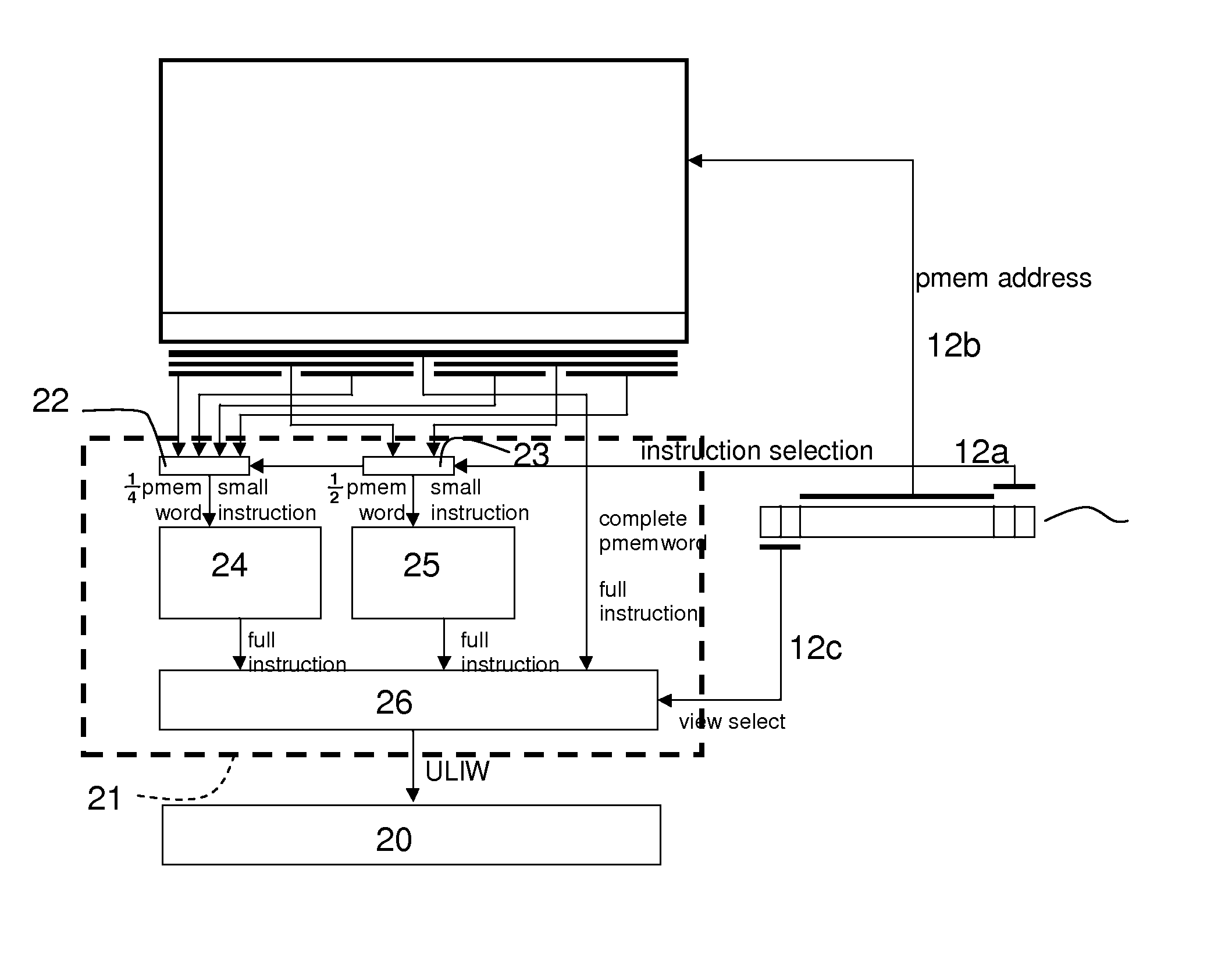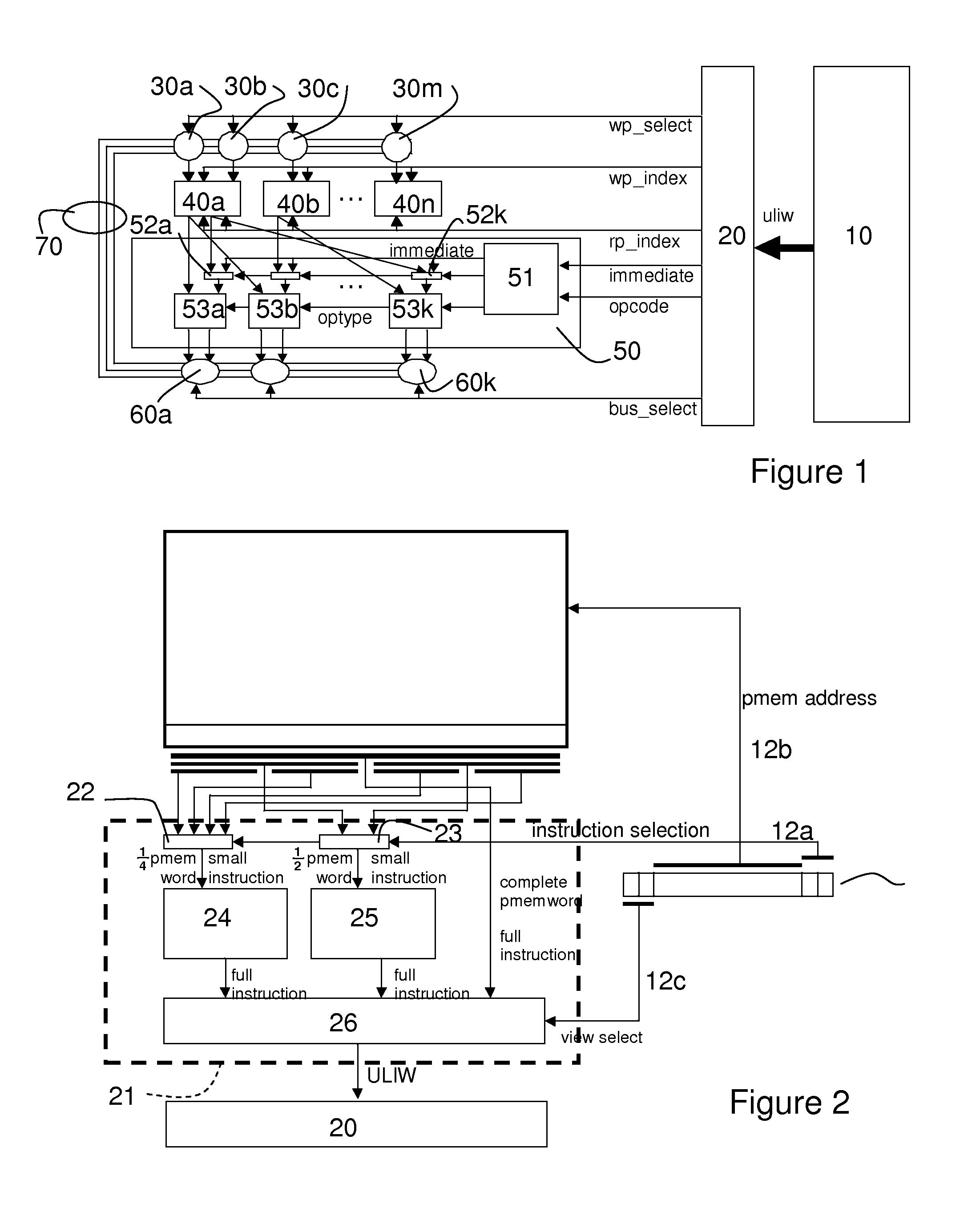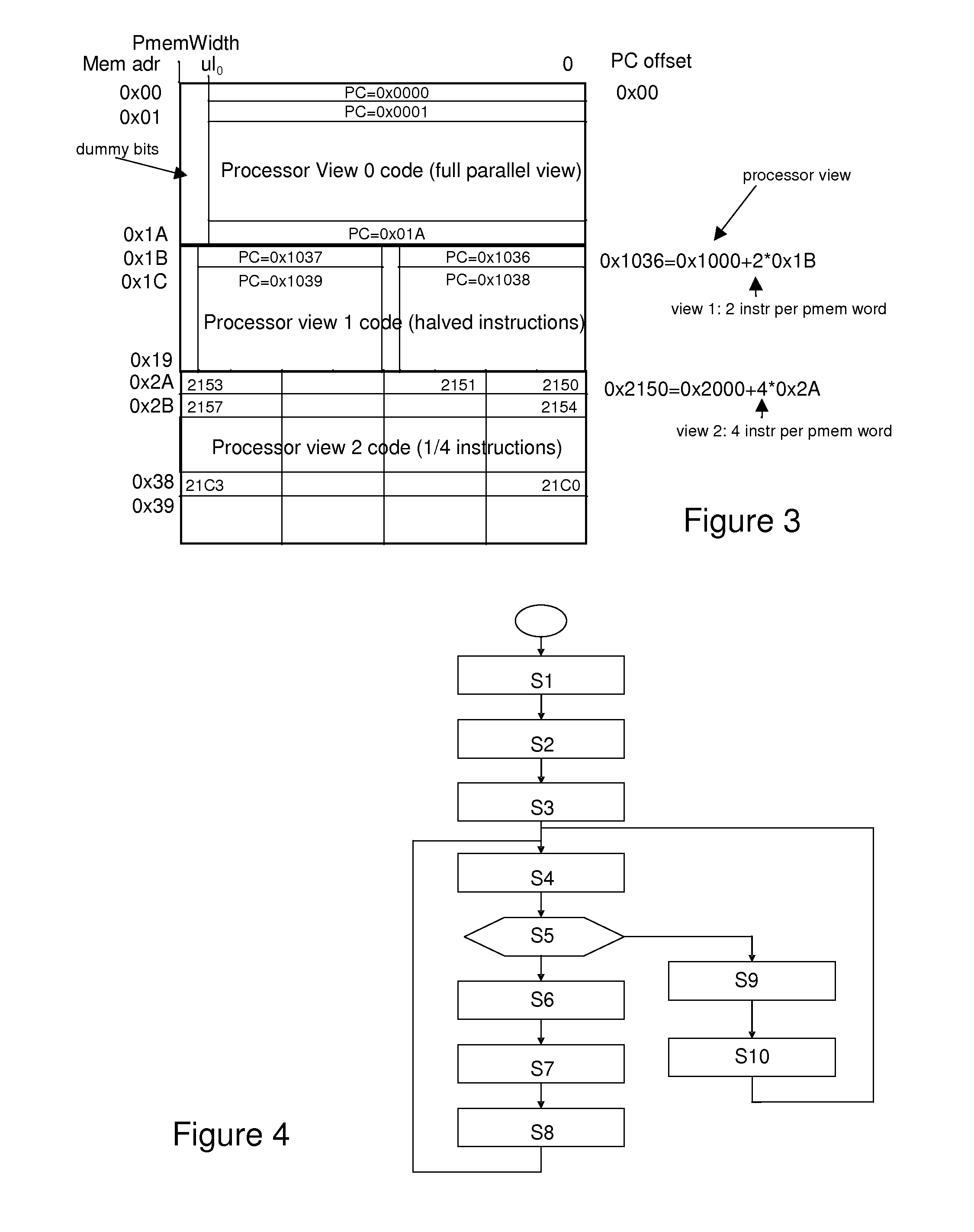Method and apparatus and record carrier
- Summary
- Abstract
- Description
- Claims
- Application Information
AI Technical Summary
Benefits of technology
Problems solved by technology
Method used
Image
Examples
first embodiment
[0119]In a first embodiment extra bits are added to each segment of a program memory word. A segment has the size of the smallest view. The number of bits to be added depends on the number of views with the same size. One bit (S) indicates whether the segment is the start (S=1) of an instruction or not. The length of the compacted instruction can be determined on the basis of these start bits of a sequence of segments. If multiple views having the same size are used for compaction of the software, extra bits can be added to identify the correct view id. Suppose that a processor has a smallest view with a size of ⅛ the full view size and that maximum two views have the same size. Then two bits need to be added per segment. The total required number of program memory bits equals PMsize*8*2=16*PMsize, wherein PMsize is the number of memory words in the program memory. As the view information is now available in the instruction, the program counter no longer needs to include the view in...
second embodiment
[0140]Table 4 shows a sequence of instructions in an exemplary program and table 5 show how the exemplary program is now stored in program memory, the compacted instructions now including the next view id field (nxt_vw_ID) as discussed above. The instruction table 4 contains besides the view and length column, an extra column that indicates the view_id of the next instruction. FIG. 12 shows a part of a programmable processor according to the present invention that is arranged for processing compacted program that is stored in program memory as shown in the table 5 above.
[0141]This second embodiment differs from the first embodiment in that the compaction scheme identifier 17 is coupled to the output of the selection facility 27.
[0142]Instructions may be fetched from the program memory 10 as indicated in the flow chart of FIG. 13.
In a first step S20 a memory word is read from the program memory 10. In a second step S21 the compaction scheme identifier 17 identifies the compaction sch...
PUM
 Login to View More
Login to View More Abstract
Description
Claims
Application Information
 Login to View More
Login to View More - R&D
- Intellectual Property
- Life Sciences
- Materials
- Tech Scout
- Unparalleled Data Quality
- Higher Quality Content
- 60% Fewer Hallucinations
Browse by: Latest US Patents, China's latest patents, Technical Efficacy Thesaurus, Application Domain, Technology Topic, Popular Technical Reports.
© 2025 PatSnap. All rights reserved.Legal|Privacy policy|Modern Slavery Act Transparency Statement|Sitemap|About US| Contact US: help@patsnap.com



